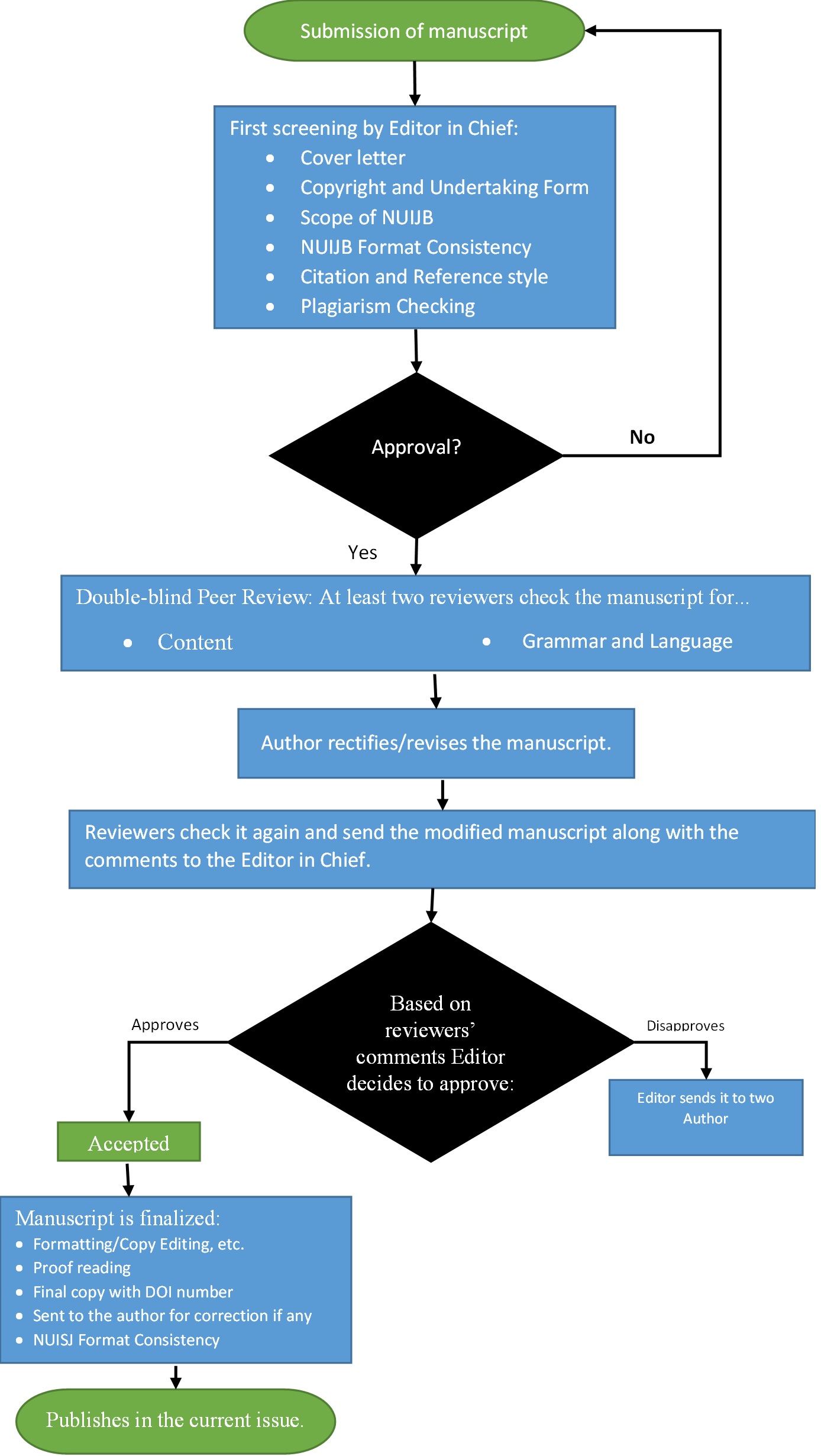Peer Review Process
Peer review is defined as subjecting an author’s scholarly work or research articles to the scrutiny of others who are experts in the same field. Peer review functions to encourage authors to meet the accepted high standards of their discipline and to ensure that unwarranted claims, unacceptable interpretations or personal views are not published without prior expert review. NUIJB strives to provide the fairest system of double-blind peer review and the best possible service to authors.

The Peer Review Process make manuscripts to become
More Robust: Peer reviewers may point out gaps in your paper that require more explanation or additional experiments.
Easier to Read: If parts of your paper are difficult to understand, reviewers can tell you so that you can fix them. After all, if an expert cannot understand what you have done, it is unlikely that a reader in a different field will understand.
More Useful: Peer reviewers also consider the importance of your paper to others in your field and can make suggestions to improve or better highlight this to readers.
Better Quality: Peer reviewers make sure that the manuscripts published in the journal are of the correct quality maintain the journal’s authenticity.
Key Peer Review Process stages
Stage 1: The first stage is internal review. After submission, the chief editor conducts an initial check on content adequacy and appropriateness, format, completeness, the publication status, plagiarism, and for machine generated manuscripts. If any plagiarism is found, the manuscript is returned to author for modification.
Stage 2: The second stage of review is the external refereeing. At this stage, the manuscript is sent to external reviewers for double blind refereeing. The referee can give feedback as publish as it is, requiring minor changes, requiring major changes. If the referee’s feedback is “publish as it is,” the paper would be published automatically. If the referee suggests any modifications or revisions in the paper, the author has to revise the paper and resubmit to journal editor. If need be, the manuscript can be sent to a different referee for consideration.
